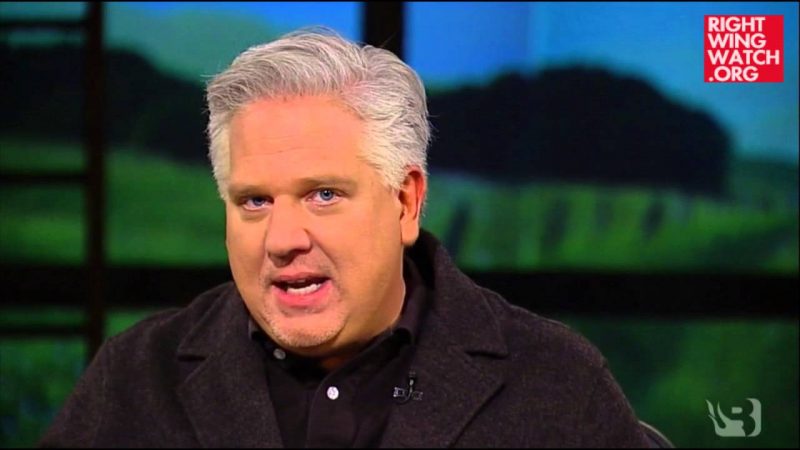Yesterday I wrote a post about how some Religious Right activists have been growing alarmed by Glenn Beck’s subtle transformation from Tea Party leader to religious leader because Beck is a Mormon, citing a recent radio program by Brannon Howse, president and founder of Worldview Weekend, which focused on how Beck has started merging Mormon doctrine with his lessons on American history.
As Julie Ingersoll explained, Howse brought Ed Decker, a former Mormon, on to his program last week to explain the significance behind the theories Beck was promoting on his August 18 show about the history of Native Americans:
[O]n his show on Wednesday, Beck discussed an obscure archeological find, the Bat Creek Stone, that Beck believes has been hidden from the public by the Smithsonian Institution and others because it is evidence of ties between ancient Israel and Native Americans — which, although Beck did not say this explicitly, would also be evidence for claims (albeit recently disputed within the LDS Church) made in the Book of Mormon. Howse, on his radio show, said he was “stunned” to hear Beck “laying down Mormon teaching” and “when [Beck] started talking about the Bat Creek Stone. . . . I didn’t stay with it, it was just too weird.” (While Howse presented no evidence that Mormons have used the Bat Creek Stone to promote such a view, Beck’s use of it was characteristically wacky, as the theory he promoted has long been discredited by archeologists) … Howse’s guest was Ed Decker, a former Mormon whose apologetics ministry, Saints Alive, focuses on demonstrating the ways in which Mormonism departs from orthodox Christianity. And together they spent nearly an hour denouncing Beck and skewering Mormonism. They even read and ridiculed comments from people on Beck’s website, who indicated that they were Mormon. Decker said Beck has been “using terminology that Mormons manipulate. . . terms that have double meanings . . . and that now he’s getting into things right out of the Book of Mormonism itself.”
Normally, when Beck goes off trying to expose these sorts of conspiracies, most of us are inclined to simply tune him out. But in this case, that would be a mistake because if you know anything about the importance of Native Americans in Mormon theology, it is blatantly obvious that Beck is now subtly incorporating his religious beliefs into his grand theory of America history:
As Richard and Joan Ostling explain in their book “Mormon America: The Power and the Promise,” this unique belief about Native America history is central to the Mormon faith:
The Book of Mormon tells of two ancient seaborne migrations from the Holy Land to the Americas, by Hebrew peoples who are assumed to be ancestors of Native Americans. The older migration, by the Jaredites, occurred after the Tower of Babel incident around 2200 BC, and the later one around 600 BC, just before the Babylonian captivity of the Israelites. In the second, more detailed narrative, Lehi, a descendant of the biblical patriarch Joseph, builds a ship. Guided by a compass, he sails by way of the Indian and Pacific Oceans to the Americans, landing possibly in Central America. Two of Lehi’s sons become wicked and rebellious, so God curses them with dark skin. Many American Indians, traditionally called “Lamanites, are supposed to have descended from them. Nephites are the descendants of Lehi’s faithful sons.
Ostling made the same point in the PBS documentary “The Mormons”:
RICHARD OSTLING: Mormonism teaches that ancient Israelites came to the New World and created scriptures, which we have today as the Book of Mormon, thus Israelites are ancestors of Native Americans. There’s a whole story, a very elaborate story of great cities being built. But non-Mormons – and I guess we’d say Mormon skeptics – who have studied these matters do not see evidence. They don’t see the DNA that would support the Israelite theory. They don’t see evidence of Hebrew language in the New World. They don’t see the archeological sites that would show these grand cities that are described.
MICHAEL COE, Archaeologist: According to a lot of Mormon archeologists, their job is to find that this is a true story, that all these things actually existed in this place that is described in the Book of Mormon, which in this case, would have to be in Guatemala and the neighboring Mexican state of Chiapas. And this is what they’ve been after for 50 years. They’ve excavated all kinds of sites, and unfortunately, they’ve never found anything that would back it up.
Clearly, this theory is the foundational premise upon which the Book of Mormon is based and, as Decker explained to Howse, Beck’s discussion of the Bat Creek Stone and the “real” history of Native Americans is designed to bolster the idea that “the Jews came to America before Columbus [because] this is the basis of the Book of Mormon … he’s saying that the Smithsonian and many of the scientific agencies of America have lied to the America people and hidden facts from them that prove that the Jews were here before Columbus”:
For years now, Beck has been a hero to the Religious Right, but you have to wonder how much longer that will last now that Beck no longer views himself simply as a conservative leader, but as a religous leader and is even using his program to promote Mormon doctrine as American history.
Update: In the interest of fairness, I want to call attention to this Joanna Brooks piece in which she argues that the role of Native Americans it not, in fact, a “foundational premise” of the Book of Mormon:
If anything, Mormon leaders have been slowly but steadily deemphasizing Native Americans over the last three decades, abandoning the grand discourse once used in the 1970s by Church leaders like Spencer Kimball to describe even contemporary Native peoples as Book of Mormon “Lamanites” with a special history and destiny. That deemphasis has led to mixed feelings and even lasting hurt among some Native peoples, as the recent death of once-prominent Navajo Mormon George P. Lee, who had served as a high-ranking Church leader but was later excommunicated, reminds us.
Ask a 21st-century Mormon what the foundational premise of the Book of Mormon is, and he or she will tell you that they believe the book is scripture because they read it and prayed about it and find reason for hope and deeper faith in its pages. As it is for most contemporary people of faith, personal spiritual experience is the foundational premise of contemporary Mormonism.
My point wasn’t that the history of the Native Americas is “foundational” to the beliefs of 21st-century Mormons, but that it was “foundational” to Joseph Smith’s own understanding of the Book of Mormon; as Richard Lyman Bushman wrote in “Joseph Smith: Rough Stone Rolling“:
The efforts to situate the Book of Mormon in history, whether ancient or modern, run up against baffling complexities. The Book of Mormon resists conventional analysis, whether sympathetic or critical. Early Mormons themselves had trouble grasping the book’s nature. When required to offer a brief summary, they often called it a history of the Indians. Samuel Smith, Joseph’s brother, on a tour to win followers in 1830, tried to sell the book as a “history of the origins of the Indians.” Joseph himself wrote a newspaper editor in 1833 that “the Book of Mormon is a record of the forefathers of our western Tribes of Indians.”








